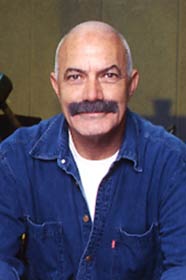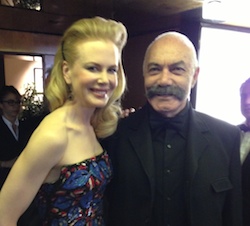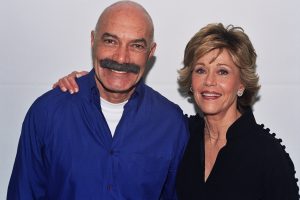With The Doom Generation, his fifth and most audacious film to date, L.A. guerrilla filmmaker Gregg Araki proves that, given a reasonable budget (less than $1 million), he can create a stunning film with superlative production values.
Grade: B+ (**** out of *****)
| The Doom Generation | |
|---|---|

Theatrical release poster
|
|
A nihilistic comedy about a trio of alienated youngsters, The Doom Generation is bold not only in its art design, but also in its narrative and tone, a mixture of satire and horror, with heavy dosage of steamy sex and macabre violence. Pic calls for an entrepreneurial distributor who, with the right handling, can score high among young hip audiences with a work that has the potential to become a midnight cult movie.
A breakthrough film that Araki’s followers have been waiting for, Doom Generation is his biggest, most ambitious and most accomplished work. It stands in sharp contrast to his previous modest, unassuming low-budgeter, Totally F***ed Up. Thematically, though, this film continues to explore issues that prevailed in Totally F***ed Up and The Living End, an “irresponsible” film about the desperate-hilarious road odyssey of two HIV-positive guys.
The Doom Generation is also structured as an apocalyptic journey into the unknown–America’s wastelands–but this time the road comedy is hallucinatory and psychedelic in a style reminiscent of Natural Born Killers, though blessedly lacking Oliver Stone’s blatant message and obvious satire.
Amy Blue (Rose McGowan), a beautiful spoiled 17-year-old girl, her sweet suburban b.f. Jordan White (James Duval) and Xavier Red (Johnathon Schaech), a mysterious drifter, embark on an outlandish trip, when Xavier blows off the head of a QuickieMart clerk. The trio flee into a bizarre world of nightmarish violence and omnipresent danger that gets darker and darker as their odyssey progresses.
Pic’s “quieter” moments are provided by stops along the road, in fantastically designed motels, in which the threesome explore their anomie–and sexuality. Their continuously changing relationships know no rules. It’s no big deal if Amy has sex with true-love Jordan and supernatural stud Xavier. For a film described by Araki as “heterosexual,” story is overripe with homoerotic overtones.
While the trio are all “freefloating” lost souls, they represent different philosophies of life, which refuse to be defined by either sexual or ethical orientation. A product of middle-class suburbia, Jordan, the only kid who has both parents, is naive, romantic, and none-too-bright. A modern version of Lolita, with a touch of Bonnie Parker, Amy’s aggressive, foul-mouthed femme is more amoral than immoral.
The most enigmatic–and menacing–figure is Xavier, whose insatiable libido can be satisfied by voyeuristic masturbation as well active participation. Violence comes naturally to him–it’s one of the film’s running jokes that whenever the trio stop for fries and drinks, someone ends up dying–each time in a more ghastly way.
Araki’s strategy is once again Godardian, this time the points of reference are Breathless (A bout de souffl, l959) and of course, Band of Outsiders (Bande a’ part, 1964), an anguished outcry against society’s inherent violence and cruelty. Like Godard’s allegorical masterpiece about a nightmarish traffic jam, Doom Generation exhibits a despairingly apocalyptic vision of a self-destructing society in which senseless mayhem runs supreme; Araki substitutes Godard’s anger with more sardonic-absurdist humor.
The narrative of Doom Generation assumes the shape of a nihilistic ballad, reflected in the music–Jesus and Mary Chain, Nine Inch Nails, Porno for Pyros. The film’s subculture holds special allure for the “Lollapalooza Generation,” cool American youngsters who grew up in a society dominated by MTV, junk food, and moral chaos.
Most of the film’s violence is played tongue-in-cheek, with hilarious stagings of a severed head or amputated arm flying through the air. However, the violence in the finale, in which Amy is brutally raped and one of the trio is castrated and forced to swallow his own penis, is unexpectedly harsh and gruesome, almost assuring NC-17 rating.
The use of the American flag and national anthem might prove offensive and disturbing to some viewers. Yet–and this is Araki’s greatest achievement–Doom Generation is a coherent work; nothing in the film is exploitative or outrageous just for the sake of being shocking.
Stylistically, Araki’s film might have been inspired by Stanley Kubrick’s A Clockwork Orange and Peter Greenaway’s The Cook, The Thief, His Wife & Her Lover. Assisted by a talented team, most notably lenser Jim Fealy and production designer Therese Deprez, every tableau and color configuration is breathtaking. Pic’s last image is particularly haunting as the screen gradually turns monochromatic and the car, inhabited by the two survivors, literally zooms into the vast and open horizon.
In the lead role, debutante McGowan is incredibly photogenic, commanding the screen with the ease and assuredness of a pro. Duval, who looks and acts like the younger Keanu Reeves, renders a quieter performance, while Schaech projects the kind of eroticism which is both appealing and repelling.
Stylishly and yet personally expressive, The Doom Generation is not only a turning point in Araki’s career, it’s also one of the few truly innovative films showcased at the 1995 Sundance Film Fest.
Cast
Rose McGowan as Amy Blue
James Duval as Jordan White
Jonathon Schaech as Xavier “X” Red
Dustin Nguyen as Nguyen Coc Suc, the convenience store clerk
Margaret Cho as Nguyen’s wife
Parker Posey as Brandi
Lauren Tewes and Christopher Knight as TV anchorpeople
Nicky Katt as Bartholomew, Carnoburger cashier
Amanda Bearse as Barmaid
Cress Williams as Peanut
Skinny Puppy as Gang of goons
Perry Farrell as Stop ‘n’ Go clerk
Heidi Fleiss as Liquor store clerk
Khristofor Rossianov as Don
Credits:
Directed and written by Gregg Araki
Produced by Gregg Araki, Andrea Sperling
Music by Dan Gatto
Cinematography Jim Fealy
Edited by Gregg Araki, Kate McGowan
Production companies UGC, The Teen Angst Movie Company
Distributed by Trimark Pictures (US); Haut et Court (France)
Release date: January 26, 1995 (Sundance Film Fest); October 27, 1995 (US)
Running time: 83 minutes



